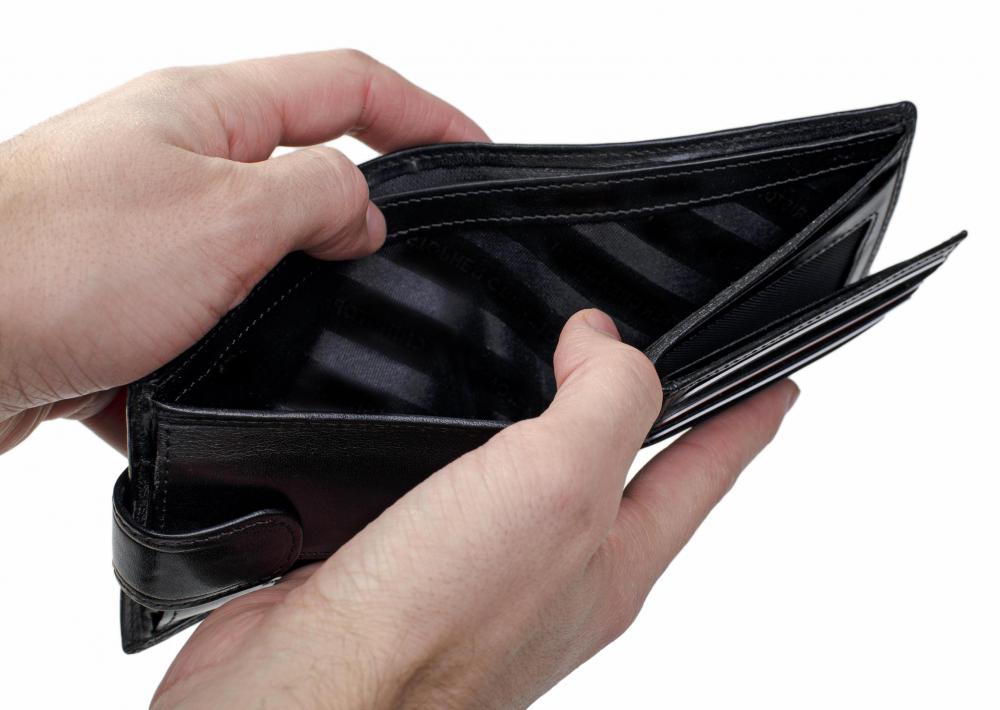At SmartCapitalMind, we're committed to delivering accurate, trustworthy information. Our expert-authored content is rigorously fact-checked and sourced from credible authorities. Discover how we uphold the highest standards in providing you with reliable knowledge.
What are the Different Types of Personal Bankruptcy?
Personal bankruptcy is a final option for individuals who cannot pay their debts. Through bankruptcy, they are given a chance to make a fresh start. Although declaring bankruptcy is a stressful procedure, it is an option for those who have debt growing at a rate faster than they are able to pay it off. There are two types of personal bankruptcy, Chapter 7 and Chapter 13.
Chapter 7 bankruptcy requires the debtor to gather up and claim all of their assets. Assets include homes, cars, and boats, as well as valuable household items, personal possessions, and savings accounts and investments. States have different guidelines about what exemptions a person can keep. Any investments or similar assets are liquidated, and then all assets are handed over to the court. From there, the property is sold. Any money received from the sale is used by the courts to pay the back debt of the individual filing for personal bankruptcy. Any debts not paid are released, and the debtor starts fresh, with no debt.

The second type of personal bankruptcy is Chapter 13. This type of bankruptcy is used by individuals who have a valuable asset, most often their home, which they want to keep. The courts will restructure a debt repayment plan, allowing debtors to pay back their outstanding debts at a lower interest rate over the course of three to five years. This repayment is monitored by the court systems.

Out of the two types of personal bankruptcy, Chapter 13 is the most common. There are guidelines in place making a Chapter 7 bankruptcy more difficult to file for. Either bankruptcy has a negative affect on credit, making it almost impossible to apply for a loan or to be considered for other services that require good credit, like many cell phone plans. The bankruptcy is erased from a person's credit report after ten years.
The United States (US) is not the only country that offers the option of personal bankruptcy to individuals who are unable to repay their debts. Canada has a system very similar to the US's. In Europe, debtors face much stricter penalties and restrictions when filing for bankruptcy.
For example, in Italy, a debtor filing for bankruptcy may be required to turn in his or her passport until after the courts have discharged them, at the end of court proceedings. In Australia, only individuals can go bankrupt. All businesses go through a liquidation process to pay back creditors. Different types of personal bankruptcy exist all over the world, but the basic principles are generally the same. The debtor either sells his or her assets to pay back debts or enters into an extended payment plan.
Bankruptcy, in any country, is a serious matter not to be entered into lightly. Anyone considering filing for bankruptcy should review all of their options carefully. Credit counseling or a debt consolidation loan are other avenues of dealing with a difficult financial situation. If bankruptcy is the best option, contact a bankruptcy attorney for information on how to proceed, and with help deciding which of the two types of personal bankruptcy will best suit your needs.
AS FEATURED ON:
AS FEATURED ON:












Discussion Comments
A debtor can still keep a valuable asset -- such as a home or car -- in a Chapter 7 because, in most cases, money is owed on those items. Quite often, changing financial circumstances mean a person is struggling to make house and car payments. In a Chapter 7, then, it is common to shed unsecured debts (credit cards, medical bills and the like) and keep those that are secured (homes and cars, for example).
Here's the thing, however -- the creditor must sign off on a reaffirmation agreement stating that debtor can pay back the debt under the original terms. Creditors are not likely to sign off on those unless any past payments are cured. In other words, if you filed bankruptcy before the repo man could get to you, then it's unlikely the creditor will agree to reaffirm your debt on the car unless the back payments are caught up and the loan is made current.
Missed payments can be handled through a Chapter 13 bankruptcy, however. Also, it is common to pay only what is owed on vehicles rather than what they are actually worth. In a lot of cases, then, it makes more sense to file a Chapter 13 for secured items the debtor wants to keep if missed payments are an issue.
Post your comments